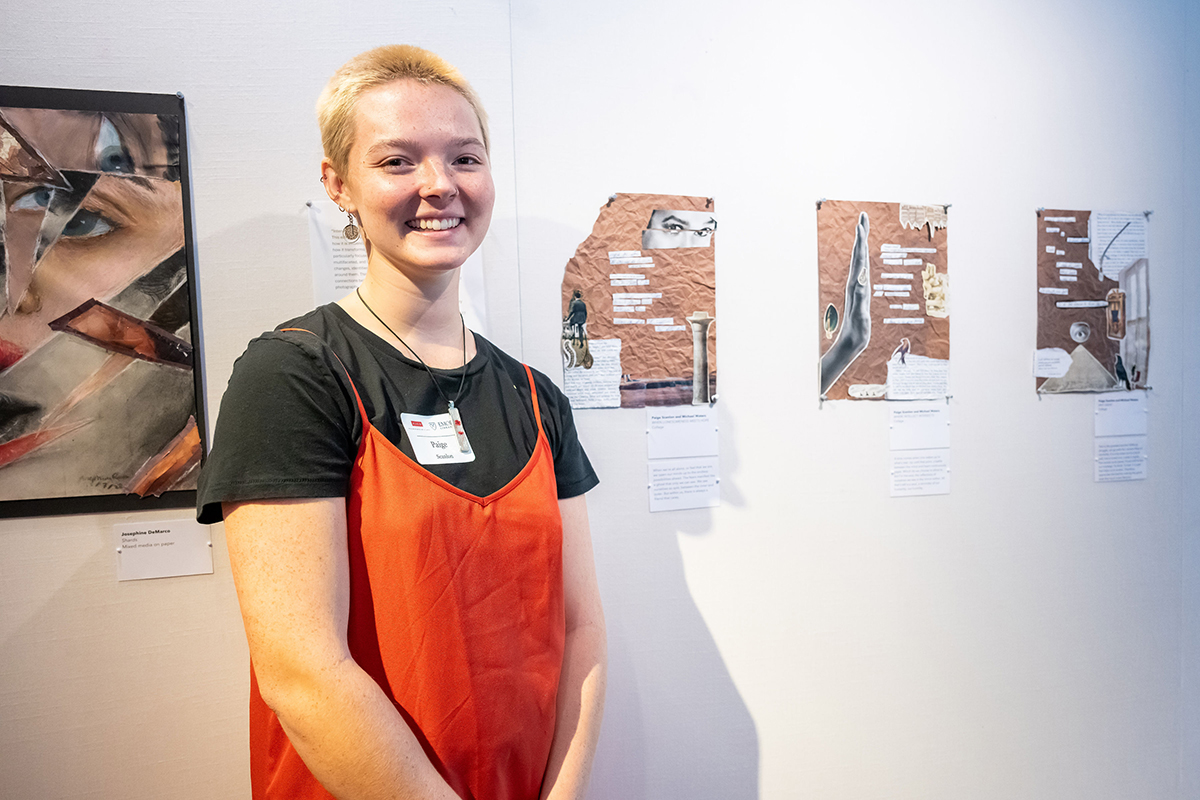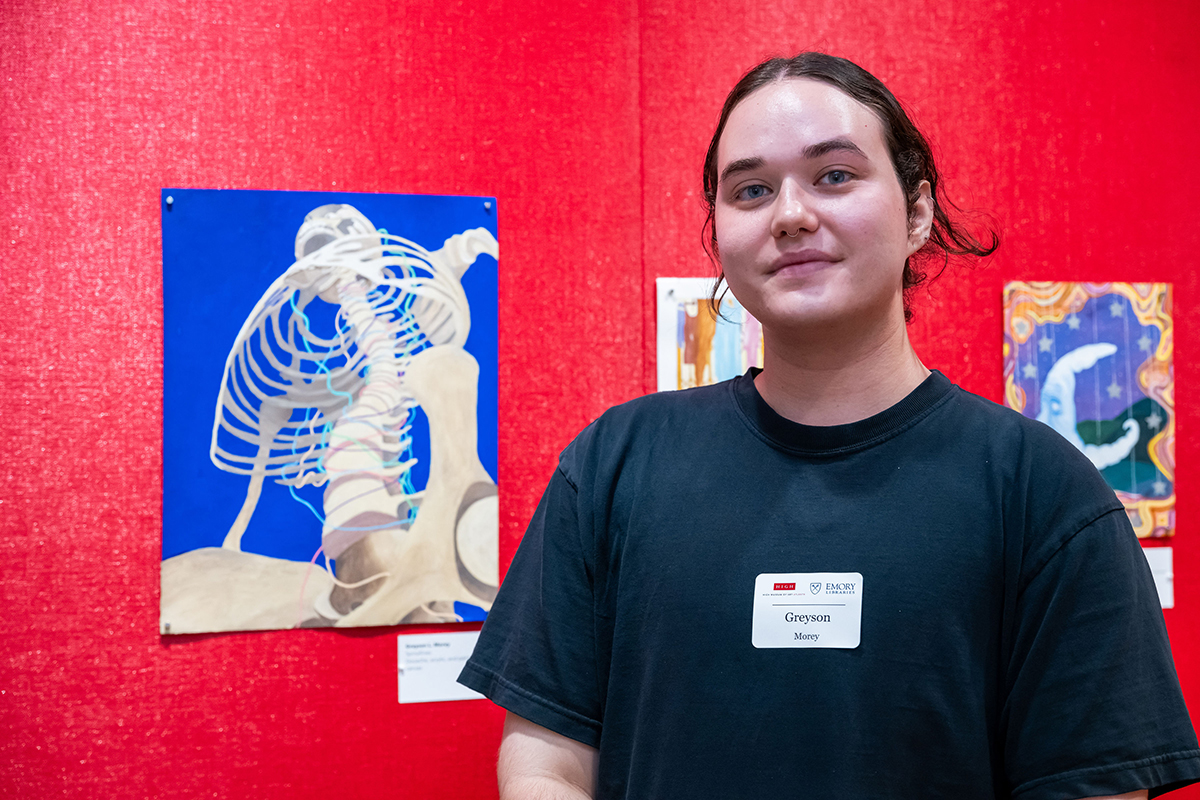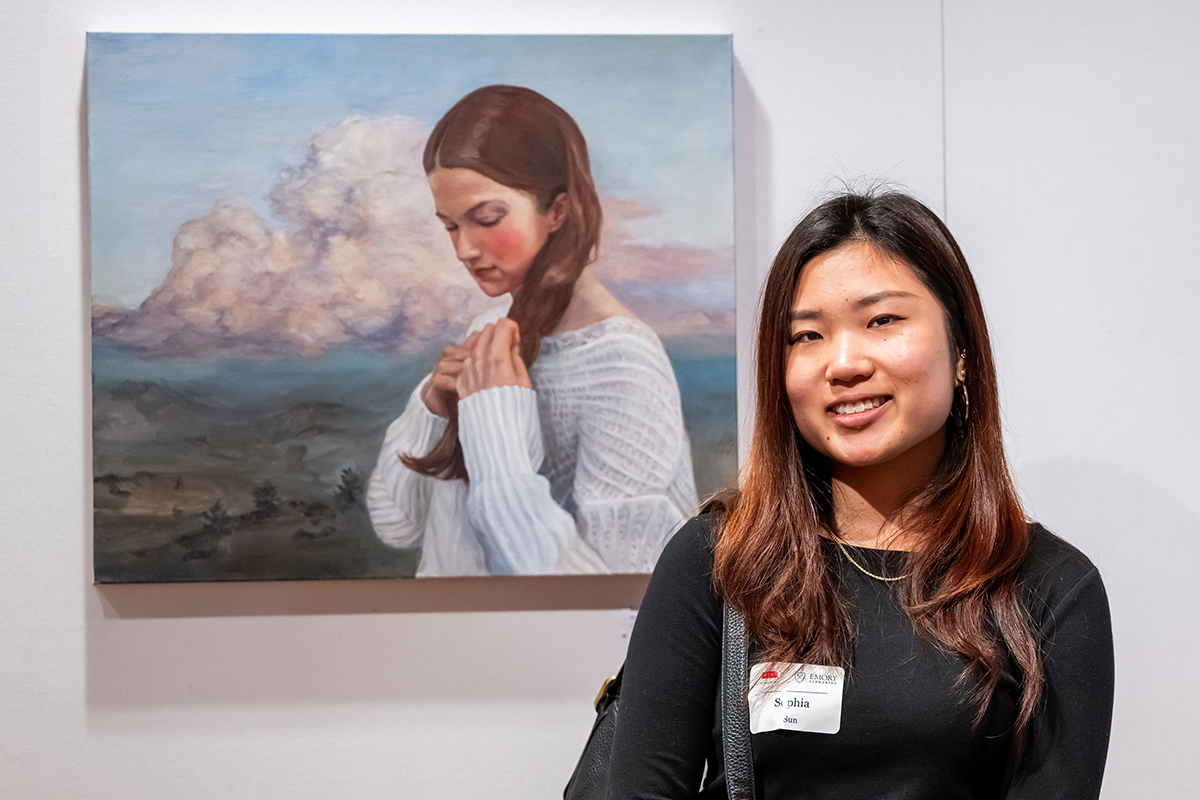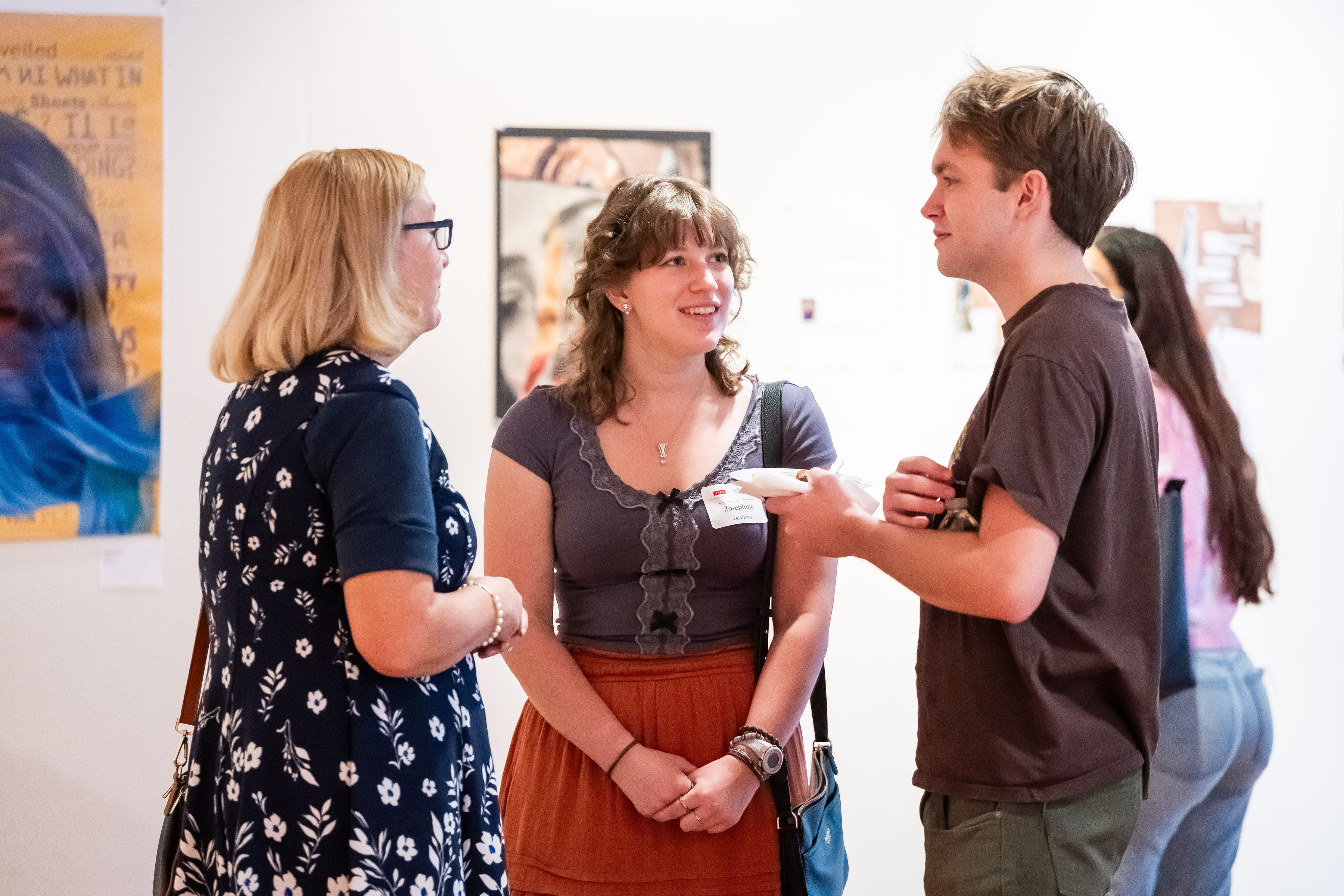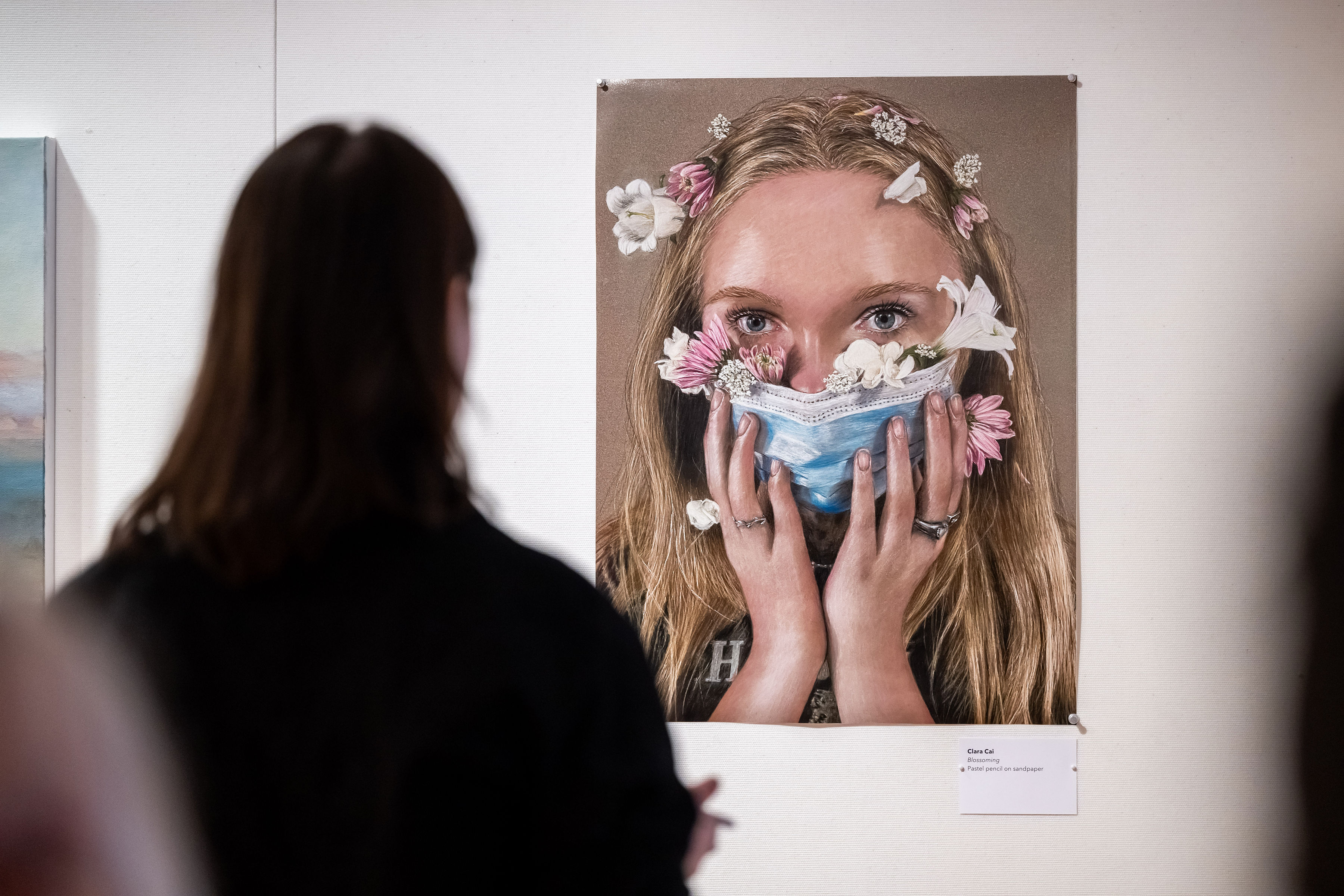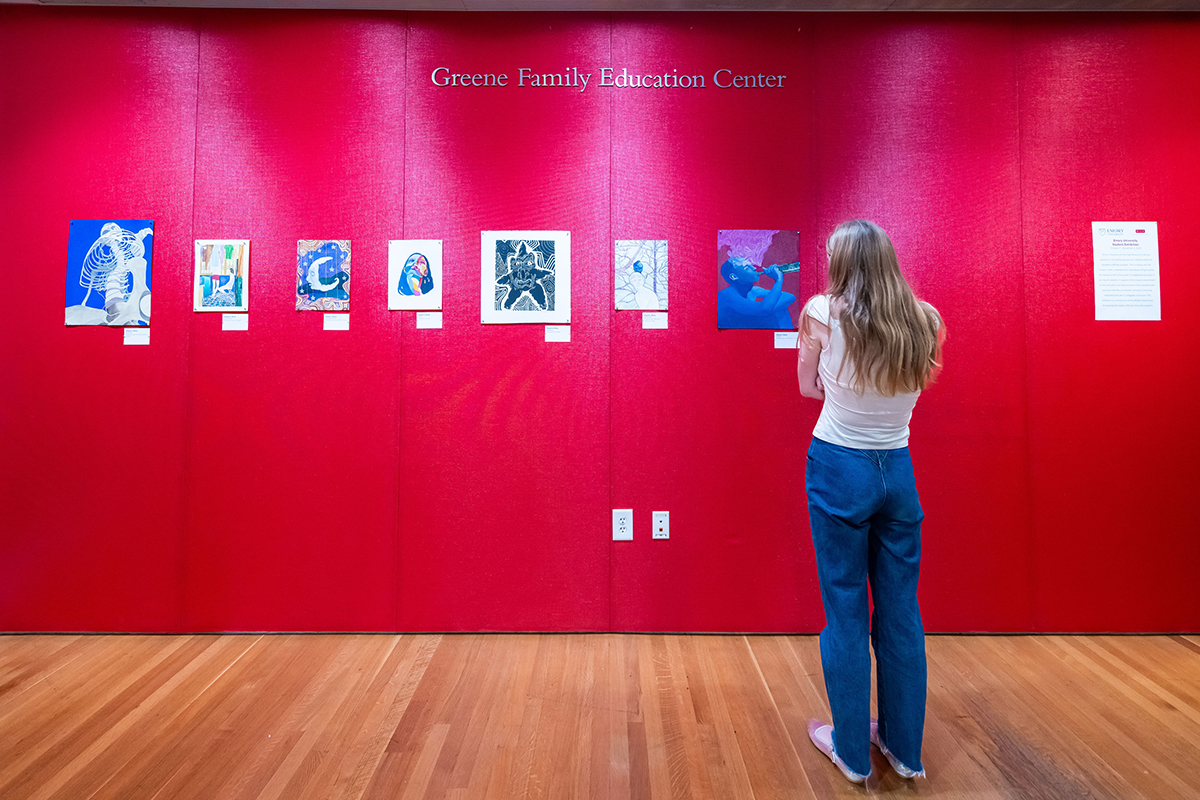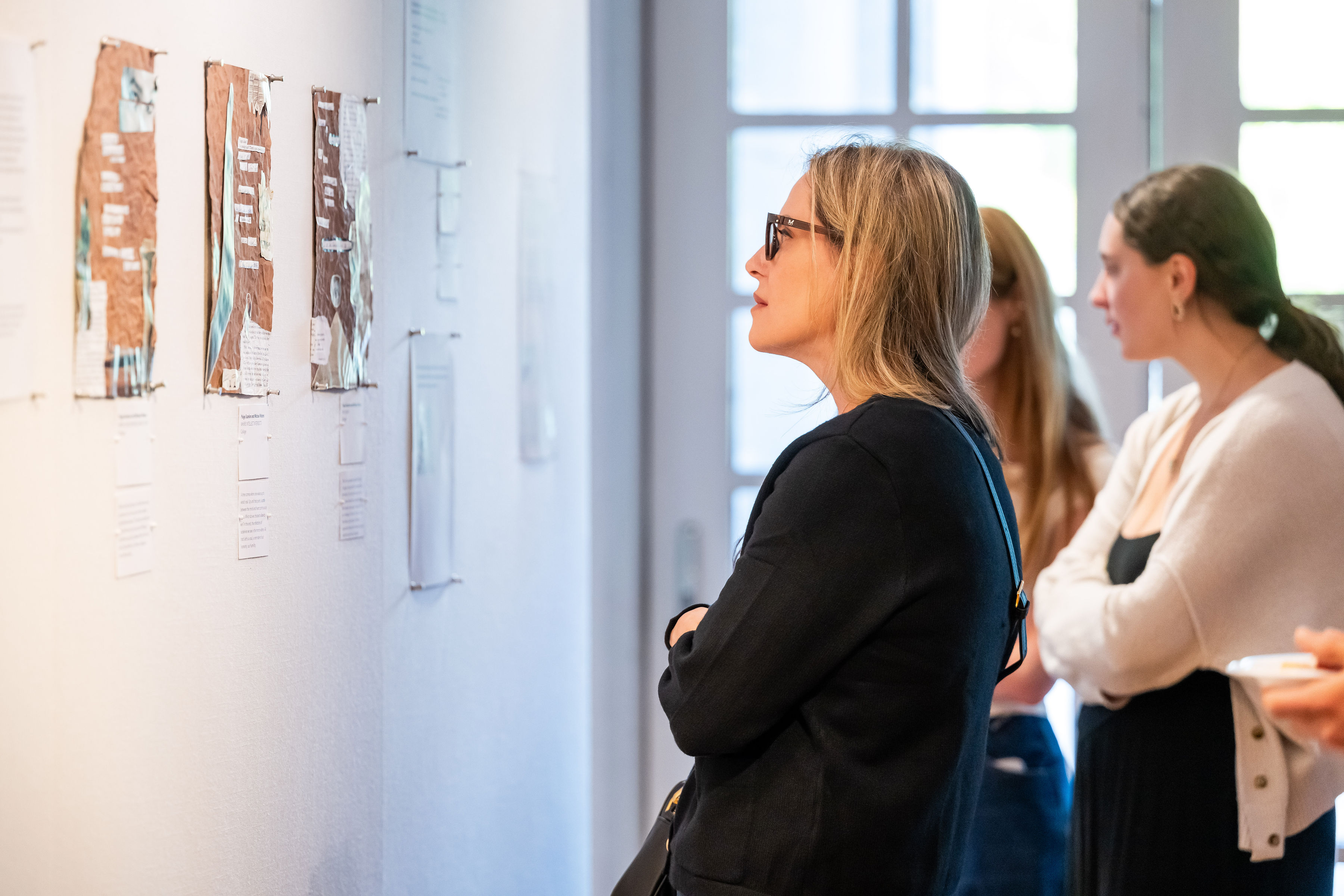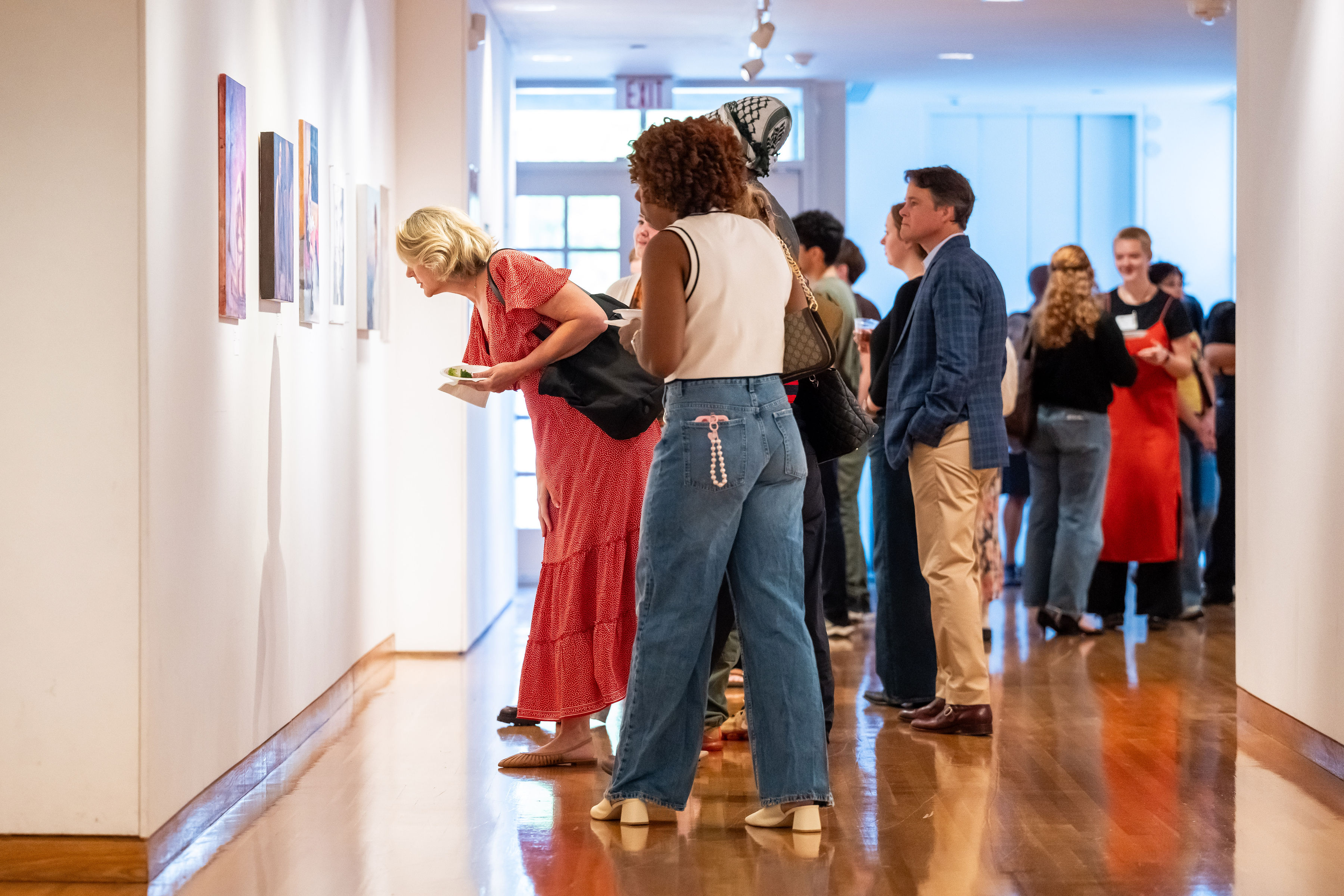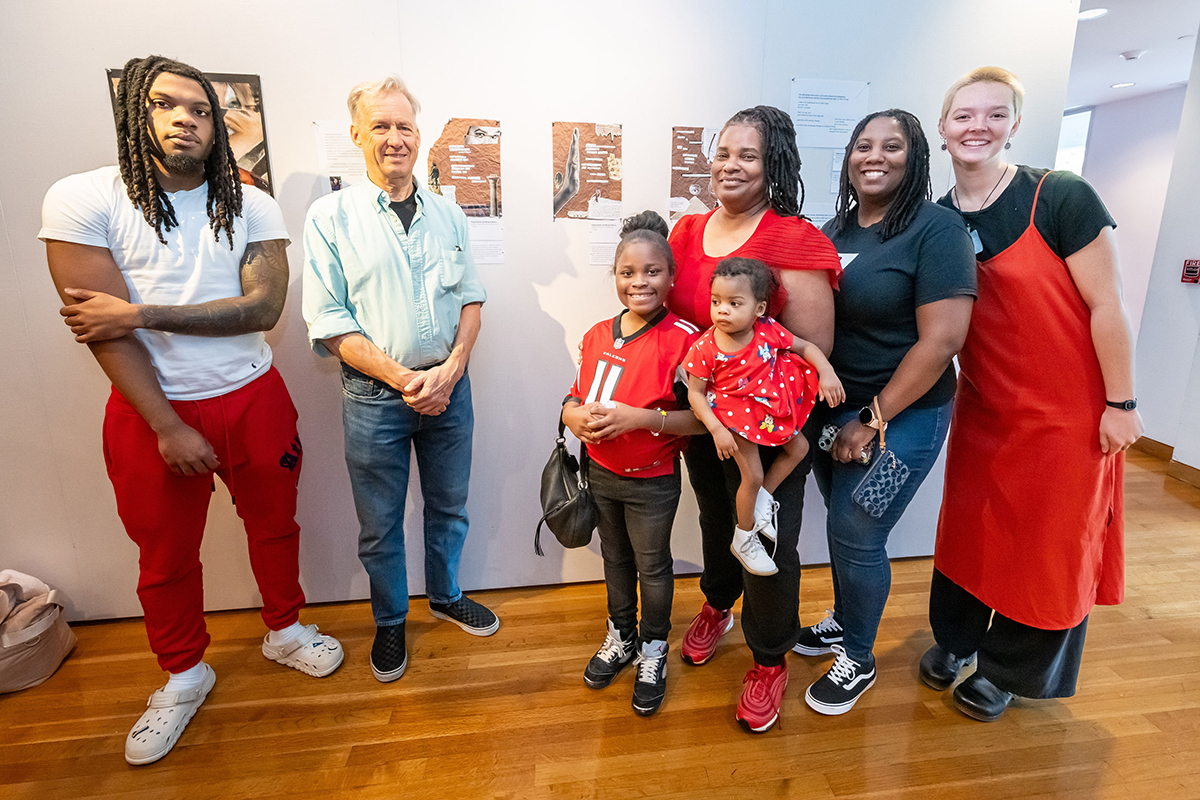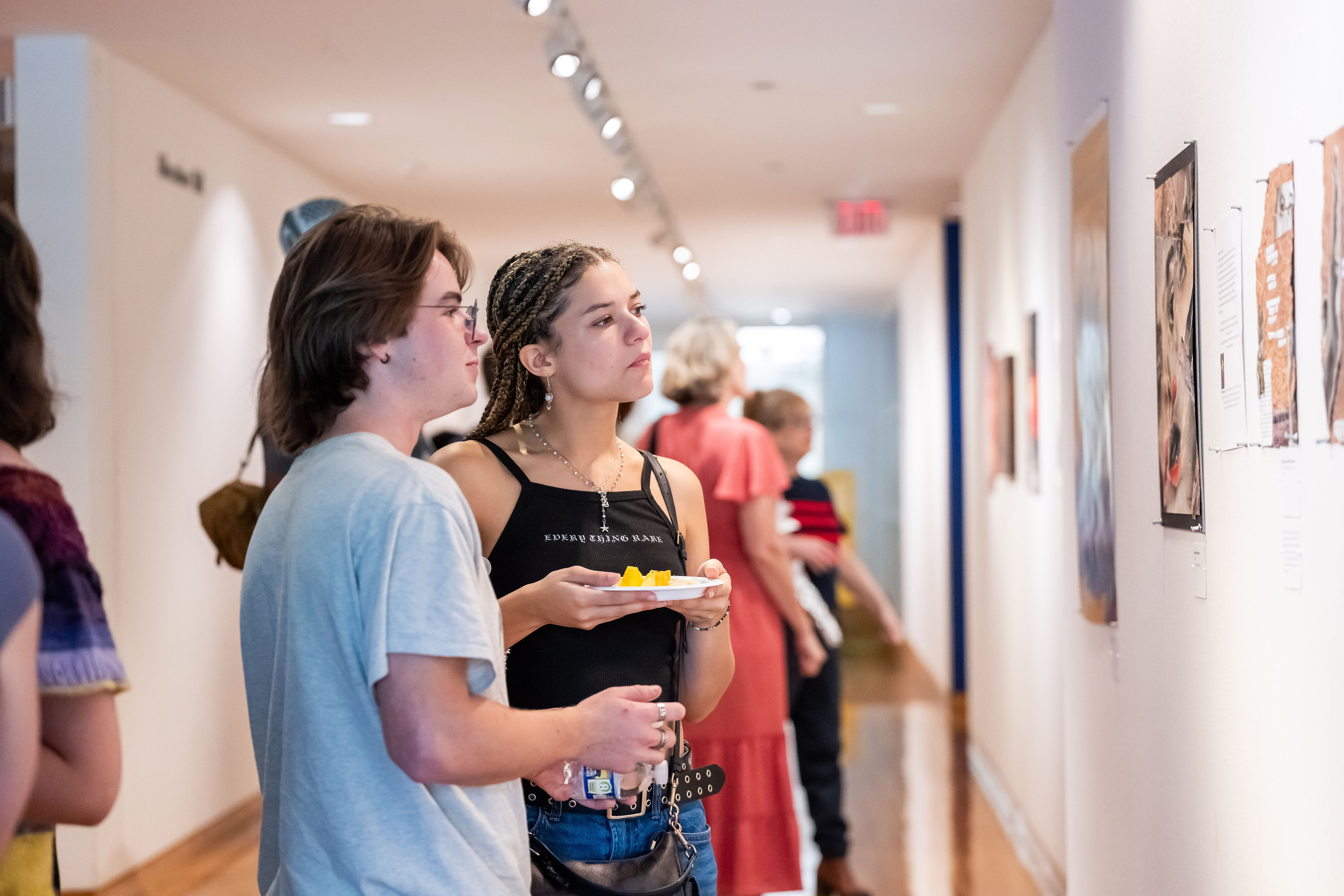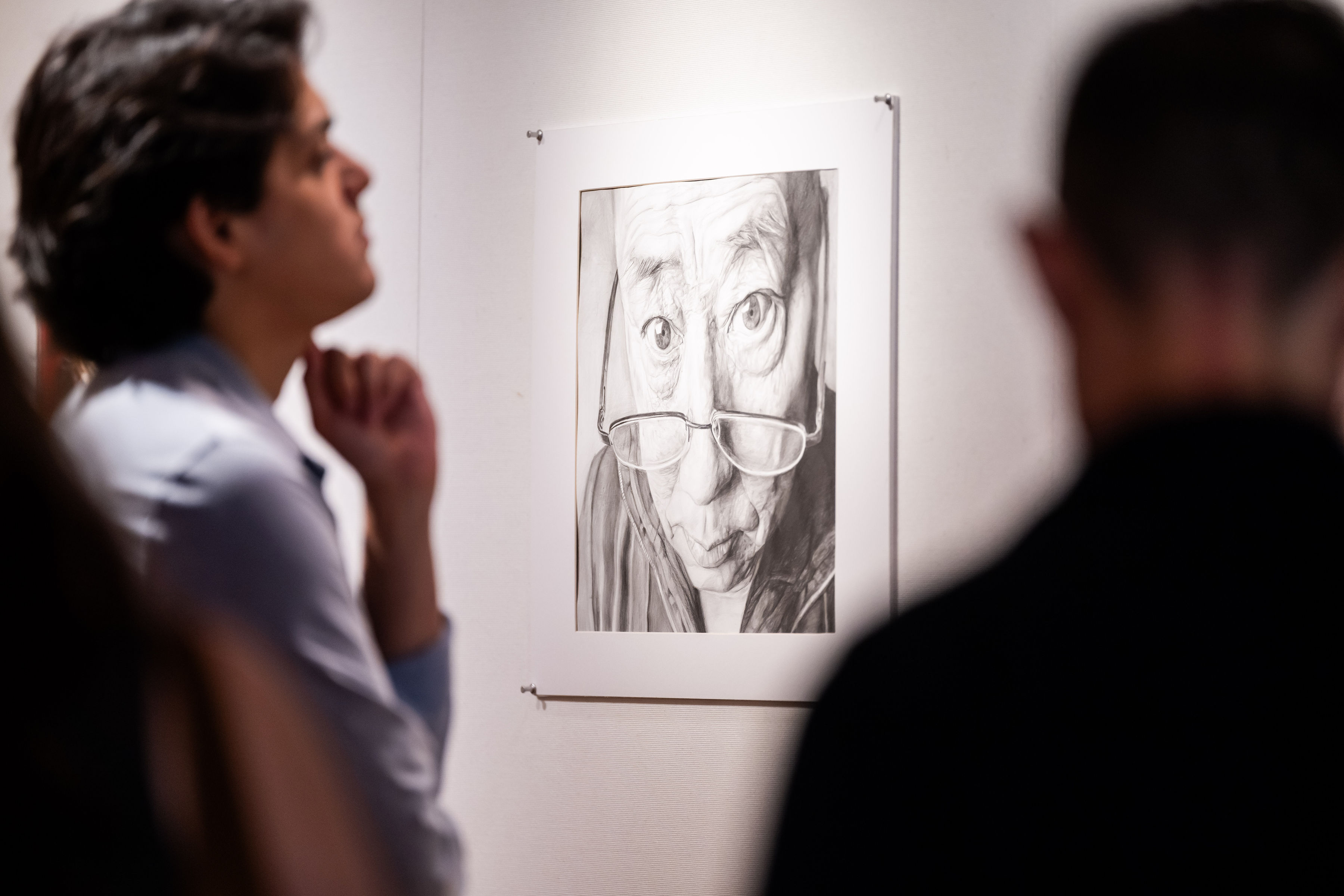One of Greyson Morey’s peak experiences as an Emory undergraduate student took place at the High Museum of Art.
That’s where he found himself hanging one of his own paintings for an exhibition of art by Emory students, on view through Nov. 2 in the museum’s Greene Family Education Center.
“Not only am I showing multiple pieces at the most prominent art museum in the entirety of the Southeast,” says Morey, a junior double majoring in English and integrated visual arts, “I've created an artist’s statement, there are going to be headshots, biographies and I got to help curate an exhibition including my own work.”
Morey’s section of the exhibit, entitled “The Vine that Ate Myself,” uses repetition of line to explore themes of queer and neurodivergent identity and coming-of-age in the American South.
A unique relationship
The event is the first of a planned annual show of art by Emory students since the university and the High forged a partnership through the museum’s Academic Affiliates program in 2024.
Kim Collins, art history librarian with Emory Libraries; Christian Hill, graphic designer with Emory Libraries, and Andi McKenzie, curator of the Works on Paper Gallery with the Michael C. Carlos Museum judged the exhibit.
They selected three student artists from a pool of applicants in the spring to curate the show. These students worked with faculty sponsors and High Museum staff to install the artwork, which includes 18 pieces created by six Emory students.
The Greene Family Education Center features gallery space reserved for students, High Museum classes and affiliated programs. Visitors to the High can view the Emory exhibit during museum hours.
The Academic Affiliates program offers Emory students, faculty and staff unique access to the High’s collections, exhibitions and research. For example, last spring, students in Emory’s “Paper Architecture” class studied rare archival materials at the museum illustrating architectural designs that are difficult or impossible to build in real life. The class is taught by Andre Patrão, assistant professor of art history.
The student art exhibit marks a rare, hands-on opportunity for young artists to learn how exhibitions work at the professional level, says Dana Haugaard, associate teaching professor and director of visual arts at Emory. “This really forced them to think through all the steps, from idea, to execution and installation, to artist’s statement,” he says.
This learning curve was precisely what stuck out to Sophia Sun, a junior majoring in biology.
“It’s obviously a really cool opportunity to have your work hung at the High,” she says. “And I learned a lot — particularly when it comes to thinking about how to design this in a way where the viewer could go from one painting to the next and sort of see the vision or the narrative that I wanted to develop.”
Haugaard served as a faculty sponsor of the exhibit along with Linda Merrill, teaching professor in the Art History Department, and Peter Wakefield, professor of pedagogy in the Institute for the Liberal Arts.
“We’re thrilled about this first student exhibition as part of Emory’s academic affiliation with the High Museum,” says Valeda Dent, vice provost of libraries and museum. “Each artist brings something truly different to the exhibition, and we’re particularly grateful to our colleagues at the High Museum and to the planning team at Emory, without whom this would not have been possible.”
“This really allows our visitors to enjoy artwork by the next generation of creatives and thinkers,” says Andrew Westover, the High’s Eleanor McDonald Storza deputy director of learning and civic engagement. “We are grateful for the strong collaboration between our staff and the Emory team and look forward to supporting student flourishing through future projects as well.”
‘His voice and my hands working together’
Learning that her artwork would appear in the exhibit felt “special and important,” says Paige Scanlon. It was also “kind of surreal.”
That’s because Scanlon, who graduated in the spring with a bachelor’s degree in religion and interdisciplinary studies, doesn’t think of herself as an artist.
The three collages she contributed to the exhibit contain snippets of letters from Michael, a religious scholar who assists the chaplain at Burruss Correctional Training Center in Forsyth, Georgia. He is also incarcerated there. (Only his first name can be shared for confidentiality reasons.)
Scanlon and Michael met in the spring as students in an interdisciplinary studies class called “Freedom and Authority,” taught by Wakefield. At class meetings — held separately for Emory students on campus and for the incarcerated students at Burruss — participants discussed works by scholars like Greek philosopher Plato, Russian novelist Nikolai Gogol and Black feminist writer Audre Lorde. They also read one another’s work.
Emory students were invited to attend one class session with their Burruss classmates at the prison.
The collages in the exhibit reflect their getting to know one another and their discussions in the class.
“Ultimately,” says Scanlon, “it’s his voice and my hands working together. We both feel so humbled that something we made is worthy of being in a museum.”
The class motivated Scanlon to pursue prison chaplaincy herself. Today, she is a graduate student at Harvard Divinity School.
The exhibit also featured the work of Clara Cai, a third-year human health and art history major; Josephine DeMarco, a third-year computer science and French major; and Tamiia Quinn, who graduated in May 2025 with a bachelor’s degree in interdisciplinary studies and visual arts.

